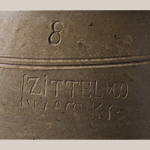Kentucky’s Madison County was a vibrant center for salt-glazed stoneware production for fifty years driven by the work of more than a dozen identified potters. From the 1840s through the close of the century—before the rise in popularity of the region’s Bybee/Waco art pottery—Madison County’s multi-generational potteries, numerous partnerships, and sporadic liquidations and acquisitions created a dynamic but relatively untold chapter in Kentucky’s ceramics history.
Stories abound about the roots of Madison County’s pottery tradition, but documentation supporting them has been scarce.[1] Regardless, the county’s white and gray clay deposits were a significant natural resource that provided an ample livelihood for stoneware potters. Today, the salt-glazed stoneware made in Madison County is well regarded and highly sought after by collectors and museums. The pottery is distinctive in that it is notably plain in decoration when compared to other Kentucky stoneware made in the first half of the nineteenth century. Potters along the Ohio River were producing salt-glazed stoneware with cobalt blue decoration as early as the 1830s (Fig. 1). Stoneware marked by Isaac Thomas (1789–c.1876) and John and Ezekiel Wood (w.1845–c.1850) of Maysville (Figs. 2 and 3) and by James H. Miller (w.1840–1884) of Brandenburg (Fig. 4) attests to their contribution to Kentucky’s ceramic history.[2]
Although the undecorated stoneware tradition in Madison County seems to have evolved independently of those along the Ohio River, there were at least three potteries on the river during the nineteenth century that also did not decorate their stoneware: George W. Doane and Anton Melcher in Louisville (Figs. 5 and 6) and G. Swingle in Vanceburg, just east of Maysville (Fig. 7).[3]
A definitive study of early Kentucky ceramics has not yet been published. This research note focuses on documenting the known and previously unknown stoneware potters working in Madison County during the nineteenth century and establishing a historical narrative for their businesses (see Appendix A for a timeline of stoneware production in the region).[4] It is hoped that the information contained in this research note about Madison County’s early salt-glazed stoneware makers provides a documented foundation for scholars to launch a comprehensive study of Kentucky’s pottery.
The Cornelison Family of Bybee and Later Stoneware Production
Local tradition has put forth for many years that potteries were operating in the small Madison County community of Bybee during the first three decades of nineteenth century.[5] The Cornelison family in particular has been cited as having established a pottery as early as 1845. While potteries—including one run by the Cornelison family—may indeed have been operating in the early nineteenth century in Bybee and the community of Waco (about a mile northwest of Bybee), there does not exist any dependable documentation to support such claims.
James E. Cornelison is often referenced as an early potter in Bybee. Born in 1844 to Webster and Mary Cornelison, James would not have been old enough to work in a pottery until the late 1850s at the earliest. In 1860, when he was 16 or 17 years old, James E. Cornelison was recorded in his father’s household working as a farm laborer.[6] A broader census search of the many Cornelison households in Madison County did not result in any other Cornelisons identified as potters from 1850 to 1870.[7] Regardless, James E. Cornelison and his son Walter (1878-1939) were significant in Madison County’s pottery production, but not until the later in the nineteenth century.[8] The Cornelisons would be at the forefront of producing the colorfully glazed Bybee/Waco stoneware art pottery that would become popular around the United States in the early twentieth century (Figs. 8 and 9).[9]
Deciphering the location of production of late nineteenth-century Bybee/Waco stoneware characterized by the Cornelisonses’ production can be a monumental task, and trying to do so for the area’s pottery made during the early twentieth century is particularly confusing. Because this research note focuses on Madison County’s nineteenth-century stoneware makers, no attempt will be made here to explain the potteries of that later period; however, an excellent overview of the twentieth-century Cornelison and Bybee/Waco potteries, including the 1920s move of production from Bybee and Waco to Lexington, has been produced by Warren Payne in his excellent and aptly named book Clear as Mud: Early 20th Century Kentucky Art Pottery.[10]
The Grinsteads
The earliest documented potters in Madison County, John Parker Grinstead (1810–1888) and his brother Matthew D. Grinstead (1814–1890) were trained salt-glazed stoneware makers from Washington County in southwest Virginia. The brothers were in Madison County by 1837 when John and Matthew purchased eighty-five acres of land on College Hill Road just north of Waco.[11] Although they probably produced stoneware in the 1840s, it is not until the 1850 census that positive evidence is found to identify John P. Grinstead as a potter (see Appendix B).
The Grinsteads achieved success over the next twenty years in building a viable, long-term pottery industry in the area through their training of local workers and the continuation of the business by successive generations of family members. John Parker Grinstead’s stoneware pots marked “J.P. GRINSTEAD” (Figs. 10 and 11) and “J. P. G.” survive today, although they are very scarce and highly sought by collectors. No stoneware has been found with a definitive Matthew D. Grinstead mark. This might be explained by the fact that producing stoneware was not a full time business for the brothers. Matthew was identified as a farmer in the 1850 census, and John Parker Grinstead was listed as a “Pot Molder & Preacher.” Thus, John may have been the primary potter for the family as well as working as a minister and the younger brother Matthew may have been more involved in a supporting role and/or doing much of the farming for the families.[12]
There is also extant stoneware stamped “GRIGGS & GRINSTEAD, / WACO, K.Y.” (Figs. 12 and 13). While it has heretofore been accepted that that mark was for John Parker Grinstead, it seems questionable because the inclusion of “Waco” in the mark indicates that the stoneware was probably made after 1861 when John Parker Grinstead was no longer living in Madison County—the 1860 Federal Census recorded him in Trimble County, where he was a working as a preacher (see Appendix C).[13] [14] It is possible that the “Griggs and Grinstead, / Waco, K.Y.” stoneware was produced by John Parker Grinstead’s son, Smith Grinstead (1834–1918), in partnership with Lucien T. Griggs. (Lucien Griggs’s involvement in the stoneware trade will be explained later.) Smith Grinstead was listed in the censuses as a potter in Madison County for several years, and moved back and forth between producing the traditional salt-glazed consumer wares and the colorfully glazed art pottery products made later in the nineteenth century.
Lastly among the Grinstead product is stoneware marked “G. W. GRINSTEAD & BRO, WACO, KY.” (Figs. 14 and 15). Pottery with that mark was produced by John Parker Grinstead’s sons George Webb Grinstead (1856–1932) and Smith Grinstead, or possibly Joseph Parker Grinstead (1862–1903), the son of Smith Grinstead and grandson of John Parker Grinstead.
Philip A. Huffman
The Grinstead stoneware production in Madison County was followed by Philip A. Huffman (1821–1898), who was born in Bourbon County, Kentucky, and moved to Madison County in 1847 where he rented land owned by Tarlton Embry adjacent to property owned by the Grinsteads. His grandfather, John Huffman, was a potter producing redware in Bourbon County in the 1820s.[15]
Huffman prospered in the business for about a decade and employed several potters. One was Augustus H. Serren (1828–1878), a potter born in New Jersey or New York and living in Huffman’s household in 1850.[16] Huffman also employed two German-trained stoneware potters, Valentine Baumstark and Dennis Zittel (both of whom will be discussed in greater detail). Valentine Baumstark became the foreman of Huffman’s operation and, in that capacity, Baumstark probably made a great deal of the stoneware that bears Huffman’s name.
In 1857, Huffman sold his pottery property to a local businessman, Lucien Griggs. After disposing of his property, Huffman moved with his family to Texas and became a farmer, merchant, and prominent citizen. He was never recorded working as a potter again and died in Texas in 1898.[17] Interestingly, it seems that Huffman’s employee, Augustus Serren, had moved to Texas as early as 1854 and established a stoneware pottery but Huffman did not join him in business (see Appendix C and Appendix D).[18]
There are four marks on surviving Huffman pottery. The earliest marks are: “P. A. HUFFMAN” (Figs. 16 and 17) and “P. A. HUFFMAN / OGGS MILL / K.Y.” (Figs. 18 and 19). Oggs Mill was the post office in Madison County from 1846 to 1850. Other known marks for Huffman pottery include “P. A. H; H & G” (the latter “H” and “G” refer to either Huffman and Griggs or Huffman and Grinstead) and “P. A. H; H & B (presumably Huffman and Baumstark). There is no known Huffman pottery with “Waco” included in the stamp, presumably because he left for Texas before 1861, when Waco established its own post office.
Valentine Baumstark
Valentine Baumstark (1825–1885) arrived in Waco around 1850 and married Mary Amerine in November of that same year.[19] He was born in Baden-Baden, Germany, and most likely had been trained as a potter before leaving for America. He quickly found work with Philip Huffman’s pottery upon arriving in Kentucky and shortly thereafter became the foreman of Huffman’s growing business.[20] As explained earlier, Baumstark probably made much of the stoneware that bears Huffman’s mark because he was the talented foreman of that operation and there exists stoneware marked “H & B,” presumably for Huffman and Baumstark.
When Huffman departed to Texas in 1857, Baumstark seems to have established his own business on the eastern side of Waco.[21] He was a very vocal Union sympathizer during the Civil War, which prompted—according to one report—John Morgan’s raiders to destroy Baumstark’s pottery property and many of his wares that were onsite.[22]
Valentine Baumstark’s mark was “V. BAUMSTARK” (Figs. 20 and 21), “V. BAUMSTARK WACO,” or simply “V. B.” Baumstark owned and/or operated a stoneware business in Waco until his death in 1885. His son, John Baumstark (1851–1923), succeeded him as the proprietor of the business for several years thereafter.[23]
In the 1890s, James E. Cornelison (b.1844) was also involved in operating what had been Baumstark’s pottery. In 1906 ownership passed to George W. Grinstead, the grandson of John Parker Grinstead, who subsequently renamed the business the “Waco Pottery.” The transfer of the business to George W. Grinstead marked the beginning of Madison County’s emergence as an in-demand producer of colorfully glazed art pottery stoneware.
Dennis Zittel
Valentine Baumstark’s nephew, Dennis Zittel (1835–1906), arrived in Waco in 1854.[24] Like his uncle, Zittel was also born in Baden-Baden, Germany, and probably trained as a salt-glazed stoneware potter in Germany before immigrating to America.[25] He began working immediately under his uncle at the Philip Huffman/Lucien Griggs pottery. Zittel most likely continued working for several years for Lucien Griggs until joining his uncle at the Baumstark pottery in Waco. Zittel left Baumstark in the 1860s to start his own business in Waco.[26]
Zittel was the last of the prominent potters in Waco to produce salt-glazed stoneware in large quantities. In 1870, he had a 33-year-old journeyman potter from Ohio named Ezra Wilbur Jr. in his household.[27] By 1880 he was joined in the business by his son, Valentine Baumstark Zittel (1864–1912).[28] A jar survives with their mark “ZITTEL & CO. / WACO KY” (Figs. 22 and 23). The son continued the business for a period after Dennis Zittel’s death in 1906.
Lucien T. Griggs
The last antebellum Madison County salt-glazed stoneware producer of note is Lucien T. Griggs (1827–1911), who was first recorded in the 1860 Madison County census as a wool manufacturer although Griggs had purchased Philip A. Huffman’s pottery in 1857 when Huffman left for Texas.[29] From surviving pots it seems that at some point Griggs took John Parker Grinstead as a partner in the pottery business (see Figs. 12 and 13). Evidence points to Griggs being a businessman, not a potter.[30] Precisely how Griggs and Grinstead operated their business partnership is not clear.
As previously mentioned, there are also known stoneware pieces from the area marked simply “H & G,” which could be either Philip A. Huffman and John Parker Grinstead or a partnership of Huffman and Lucien Griggs. Although there is no known record of Huffman and Grinstead being partners, the men did own property adjacent to one another and they apparently shared the same kiln for at least for some of their respective potteries’ work. It is more likely that the pottery marked “H & G” is from a Huffman and Grinstead partnership. Griggs seems to have been primarily a businessman who financed Huffman’s move to Texas by purchasing Huffman’s pottery operation.
Conclusion
Incomplete records, romanticized newspaper articles, and local folklore make it difficult to establish precisely the entire history of salt-glazed stoneware production in Madison County, Kentucky. At the very least, the documentary record enables unequivocal identification of over a dozen potters working in Madison County during the second half of the nineteenth century.
The Grinsteads, Philip Huffman, Valentine Baumstark and Dennis Zittel, and Lucien Griggs were responsible for the great majority of the salt-glazed stoneware produced in Madison County in the nineteenth century. They were not alone but they are the only ones for which marked pottery survives today and form the core of Madison County’s stoneware legacy.
Unanswered questions remain: Why didn’t Madison County stoneware makers incorporate cobalt blue decorations on their pots as did their Kentucky contemporaries along the Ohio River and stoneware makers in other regions of the United States? What were the factors that influenced the Bybee and Waco potters’ transition from the salt glaze of mid-century to the colorful glazes of the late nineteenth and early twentieth centuries? And how would the answers to those questions position Madison County’s early stoneware makers within the greater Kentucky pottery tradition? This research note is but the beginning of a much larger study—one the author hopes is taken up by decorative arts scholars interested in enhancing our understanding of Kentucky’s rich ceramic heritage.
Bob Noe and his wife, Norma, have been active collectors of important southern decorative arts for over fifty years. As natives of Kentucky, the couple’s focus has been on the furniture, paintings, textiles, ceramics and silver made in their home state. Over the years, their discoveries and scholarship have contributed greatly to the understanding of Kentucky’s early material culture. Mr. Noe may be contacted at [email protected].
Appendix A: Timeline of Madison County Salt-Glazed Stoneware Potters
|
1837 |
Brothers John P. and Matthew D. Grinstead, moved from Virginia and established a stoneware pottery on College Hill Road just north of Waco |
|
1847 |
Philip A. Huffman moved from Bourbon County to Madison County and established a stoneware pottery in Waco adjacent to the Grinstead’s pottery |
|
1850 |
Valentine Baumstark arrived in Waco from Germany and began working for Philip Huffman |
|
1853 |
Dennis Zittel, a nephew of Valentine Baumstark, arrived in Waco and began working with his uncle at Huffman’s pottery |
|
1857 |
Lucien Griggs purchased Philip Huffman’s pottery and Huffman moved to Collin County, Texas |
|
1857 |
Valentine Baumstark established his own pottery operation in Waco |
|
1857-60 |
Dennis Zittel probably operated Griggs’s pottery |
|
1860 |
John P. Grinstead moved to Trimble County, KY, to become a full-time minister |
|
1860-62 |
Dennis Zittel left the Griggs pottery and began working for his uncle, Valentine Baumstark |
|
1860s-1870s |
John P. Grinstead and/or his son, Smith Grinstead, probably establish a partnership with Lucien Griggs using the “Griggs and Grinstead” mark |
|
1863-64 |
Dennis Zittel established his own pottery in Waco |
|
1880 |
James E. Cornelison listed for the first time as a potter in the federal census |
|
1880 |
Lucien Griggs listed in the federal census as a farmer in Waco and no longer seemed to be a part of the Waco pottery business |
|
1880s-1900s |
John P. Grinstead’s sons, Smith Grinstead and George Webb Grinstead operated a pottery using the “G.W. Grinstead & Bro” mark |
|
1880s-1890s |
Dennis Zittel and his son, Valentine Baumstark Zittel, transitioned their operation over to making pottery glazed using the Albany slip process, essentially ending the production of traditional salt-glazed stoneware in Madison County |
|
1885 |
Valentine Baumstark died and his son, John Baumstark, took over the pottery business |
|
1890s-1900s |
James E. Cornelison and his son, Walter Cornelison, took over operations of what was the Baumstark pottery from John Baumstark and production began of widely popular, colorfully glazed stoneware |
|
1906 |
Dennis Zittel died and his son Valentine Baumstark Zittel continued operating the pottery |
|
1906 |
The Cornelison pottery was acquired by George W. Grinstead, the grandson of John Parker Grinstead, who subsequently renamed the business the “Waco Pottery” |
Appendix B: Madison County Potters in the 1850 Federal Census
1850 Federal Census, Madison County, Kentucky
| District No. | House No. | Name | Age | Occupation | Value of Real Estate | Place of Birth |
|
1 |
225 |
John B [P] Grinstead |
39 |
Pot Molder & Preacher |
300 |
Virginia |
|
Mary Grinstead |
35 |
|
Madison Co., KY |
|||
|
Smith Grinstead |
15 |
|
Madison Co., KY |
|||
|
Margaret Grinstead |
13 |
|
Madison Co., KY |
|||
|
Julia Grinstead |
12 |
|
Madison Co., KY |
|||
|
Catherine Grinstead |
8 |
|
Madison Co., KY |
|||
|
Joel Grinstead |
10 |
|
Madison Co., KY |
|||
|
George Grinstead |
7 |
|
Madison Co., KY |
|||
|
Elizabeth Grinstead |
5 |
|
Madison Co., KY |
|||
|
Mary Grinstead |
3 |
|
Madison Co., KY |
|||
|
|
|
|||||
|
2 |
377 |
M. D. Grinstead |
36 |
Farmer |
none |
Virginia |
|
Eliza Grinstead |
35 |
|
Madison Co., KY |
|||
|
Elizabeth Grinstead |
10 |
|
Madison Co., KY |
|||
|
Wesley Grinstead |
9 |
|
Madison Co., KY |
|||
|
George Grinstead |
7 |
|
Madison Co., KY |
|||
|
John Grinstead |
5 |
|
Madison Co., KY |
|||
|
Mary Grinstead |
3 |
|
Madison Co., KY |
|||
|
Edward Grinstead |
2 |
|
Madison Co., KY |
|||
|
Charlotte Grinstead |
1 mo. |
|
Madison Co., KY |
|||
|
|
|
|||||
|
2 |
94 |
P. A. Huffman |
28 |
Pot Molder |
none |
Madison Co., KY |
|
Caroline Huffman |
26 |
|
Madison Co., KY |
|||
|
Walter Huffman |
4 |
|
Madison Co., KY |
|||
|
John Huffman |
1 |
|
Madison Co., KY |
|||
|
|
|
V. Vaughn Stock [Valentine Baumstark] |
23 |
Pot Molder |
|
Germany |
|
|
|
Augustus Serryn |
22 |
Pot Molder |
|
New Jersey |
|
E. W. Webb |
15 |
Farmer |
Madison Co., KY |
Appendix C: Madison County Potters in the 1860 Federal Census
1860 Federal Census, Madison County, Kentucky
| District No. | House No. | Name | Age | Occupation | Value of Real Estate | Value of Personal Estate | Place of Birth |
|
1 |
225 |
Valentine Baumstock [Baumstark] |
34 |
Manufactor Stone Ware |
1700 |
1000 |
Baden, Germany |
|
Mary Baumstock |
29 |
|
Kentucky |
||||
|
John A. Baumstock |
8 |
|
Kentucky |
||||
|
Josaphene Baumstock |
7 |
|
Kentucky |
||||
|
Ellen Baumstock |
5 |
|
Kentucky |
||||
|
Elizabeth Baumstock |
1 |
|
Kentucky |
||||
|
Catharine Baumstock |
1 |
|
Kentucky |
||||
|
|
|
|
|
|
|
|
|
|
1 |
232 |
Lucian Griggs |
33 |
Wool Manufacture |
2500 |
3000 |
Kentucky |
|
Mary A. Griggs |
33 |
|
Kentucky |
||||
|
|
|
Dennis Zittle |
25 |
Stone Ware Manufacture |
none |
300 |
Baden, Germany |
|
|
|
|
|
|
|
|
|
|
1 |
989 |
Matthew Grinstead |
46 |
Farmer & Potter |
2000 |
2000 |
Virginia |
|
Eliza Grinstead |
44 |
|
Kentucky |
||||
|
|
|
George Grinstead |
16 |
Farmer |
|
|
Kentucky |
|
John Grinstead |
14 |
|
Kentucky |
||||
|
Mary A. Grinstead |
12 |
|
Kentucky |
||||
|
Edwared O. Grinstead |
10 |
|
Kentucky |
||||
|
Charlotte Grinstead |
7 |
|
Kentucky |
||||
|
Clarence F. [or T.] Grinstead |
6 |
|
Kentucky |
||||
|
William F. [or T.] Grinstead |
4 |
|
Kentucky |
||||
|
Valentine Grinstead |
3 |
|
Kentucky |
||||
|
|
|
|
|
|
|
|
|
|
1 |
301 |
Smith Grinstead |
27 |
Manufacture Stone Ware |
350 |
200 |
Kentucky |
|
Emilia Grinstead |
21 |
|
Kentucky |
||||
|
George W. Grinstead |
4 |
|
Kentucky |
||||
|
Candas Grinstead |
4 mo. |
|
Kentucky |
||||
|
George Grinstead |
16 |
|
Kentucky |
1860 Federal Census, Trimble County, Kentucky
| District No. | House No. | Name | Age | Occupation | Value of Real Estate | Value of Personal Estate | Place of Birth |
|
Bedford |
420 |
John P. Grinstead |
49 |
Minister of M.E.P.Y. |
none |
400 |
Virginia |
|
Mary Grinstead |
45 |
|
Kentucky |
||||
|
Julyan Grinstead |
21 |
|
Kentucky |
||||
|
Catharine Grinstead |
18 |
|
Kentucky |
||||
|
Mary Grinstead |
13 |
|
Kentucky |
||||
|
James C. Grinstead |
7 |
|
Kentucky |
1860 Federal Census, Collin County, Texas
| District No. | House No. | Name | Age | Occupation | Value of Real Estate | Value of Personal Estate | Place of Birth |
|
5 |
219 |
Philip A. Huffman |
38 |
Farmer |
7000 |
4000 |
Kentucky |
|
Caroline Huffman |
36 |
|
Kentucky |
||||
|
Walter A. Huffman |
13 |
|
Kentucky |
||||
|
Clinton L. Huffman |
7 |
|
Kentucky |
||||
|
Mary S. Huffman |
5 |
|
Kentucky |
||||
|
Firey Thomas |
27 |
Carpenter |
Kentucky |
||||
|
Solomon Kenedy |
25 |
Farmer |
Ohio |
1860 Federal Census, Denton County, Texas
| District No. | House No. | Name | Age | Occupation | Value of Real Estate | Value of Personal Estate | Place of Birth |
|
NR |
535 |
A. H. Serren |
31 |
Master Potter |
5700 |
3500 |
New York |
Appendix D: Madison County Potters in the 1870 Federal Census
1870 Federal Census, Madison County, Kentucky*
| Post Office | House No. | Name | Age | Occupation | Value of Real Estate | Value of Personal Estate | Place of Birth |
|
Waco |
196 |
Dennis Zittel |
34 |
Potter |
2000 |
1000 |
Germany |
|
|
Elizabeth Zittel |
24 |
|
Kentucky |
|||
|
|
Valentine B Zittel |
7 |
|
Kentucky |
|||
|
|
Ann Zittel |
2 |
|
Kentucky |
|||
|
|
Mollie |
1 |
|
Kentucky |
|||
|
|
Lamb Williams |
14 |
Common Laborer |
Kentucky |
|||
|
|
Terrilda Dodd |
16 |
Farm Laborer |
Kentucky |
|||
|
|
John Dodd |
27 |
Common Laborer |
Kentucky |
|||
|
|
Marwiva Dodd |
26 |
|
Kentucky |
|||
|
|
John Dodd |
6 |
|
Kentucky |
|||
|
|
William Dodd |
2 |
|
Kentucky |
|||
|
|
|
|
|||||
|
Waco |
199 |
Valentine Baumstalk [Baumstark] |
45 |
Potter |
5000 |
5000 |
Germany |
|
|
Mary Baumstalk |
40 |
|
Kentucky |
|||
|
|
|
John Baumstalk [Baumstark] |
19 |
Potter |
|
|
Kentucky |
|
|
Josaphine Baumstalk |
17 |
|
Kentucky |
|||
|
|
Ellen Baumstalk |
15 |
|
Kentucky |
|||
|
|
Kate Baumstalk |
13 |
|
Kentucky |
|||
|
|
Annie Baumstalk |
11 |
|
Kentucky |
|||
|
|
Elizabeth Baumstalk |
4 |
|
Kentucky |
|||
|
|
William Baumstalk |
1 |
|
Kentucky |
|||
|
|
|
|
|
|
|
|
|
|
Waco |
200 |
M. D. Grinstead |
56 |
Potter |
4000 |
3500 |
Virginia |
|
|
Eliza Grinstead |
55 |
|
Kentucky |
|||
|
|
|
George Grinstead |
26 |
Potter |
|
|
Kentucky |
|
|
|
Edward Grinstead |
21 |
Potter |
|
|
Kentucky |
|
|
Lottie Grinstead |
19 |
|
Kentucky |
|||
|
|
Clarance Grinstead |
17 |
|
Kentucky |
|||
|
|
William Grinstead |
14 |
|
Kentucky |
|||
|
|
Valentine Grinstead |
13 |
|
Kentucky |
|||
|
|
John Emarin |
89 |
Retired farmer |
none |
1500 |
Germany |
|
|
|
|
|
|
|
|
|
|
|
Waco |
220 |
Smith Grinstead |
48 [38] |
Potter |
500 |
500 |
Kentucky |
|
|
Emilia Grinstead |
31 |
|
Kentucky |
|||
|
|
George Grinstead |
15 |
|
Kentucky |
|||
|
|
Cyrus Grinstead |
10 |
|
Kentucky |
|||
|
|
Joseph Grinstead |
6 |
|
Kentucky |
|||
|
|
Moy Grinstead |
4 |
|
Kentucky |
|||
|
|
|
|
|
|
|
|
|
|
Waco |
242 |
James Cornelison |
26 |
Potter |
none |
none |
Kentucky |
* Lucien T. Griggs could not be found in the 1870 Federal Census
1870 Federal Census, Knox County, Kentucky
| Post Office | House No. | Name | Age | Occupation | Value of Real Estate | Value of Personal Estate | Place of Birth |
|
Barbourville |
8 |
J. P. Grinstead |
59 |
Potter & Farmer |
5000 |
1390 |
Virginia |
|
Sarah M. Grinstead |
41 |
|
Kentucky |
||||
|
William A. Grinstead |
14 |
|
Kentucky |
||||
|
Julia A. Grinstead |
30 |
|
Kentucky |
||||
|
Mollie Grinstead |
21 |
|
Kentucky |
||||
|
James C. Grinstead |
17 |
|
Kentucky |
||||
|
E. W. Mccleland |
18 |
|
Virginia |
1870 Federal Census, Denton County, Texas
| Post Office | House No. | Name | Age | Occupation | Value of Real Estate | Value of Personal Estate | Place of Birth |
|
Denton |
45 |
Augustus Seren |
41 |
Potter |
2400 |
2800 |
New York |
|
Esther F. Seren |
24 |
|
Texas |
||||
|
John L. Seren |
3 |
|
Texas |
||||
|
James Seren |
2 |
|
Texas |
||||
|
Mary F. Seren |
1 |
|
Texas |
||||
|
Freina Barny |
30 |
Farmer |
Iowa |
1870 Federal Census, Chambers County, Texas
| Post Office | House No. | Name | Age | Occupation | Value of Real Estate | Value of Personal Estate | Place of Birth |
|
Wallisville |
3 |
Phil Huffman |
49 |
Beef Packer |
NR |
NR |
Kentucky |
|
Carrie Huffman |
47 |
|
Kentucky |
||||
|
Chirton Huffman |
17 |
|
Kentucky |
||||
|
Sue Huffman |
15 |
|
Kentucky |
||||
|
Carrie Huffman |
10 |
|
Texas |
||||
|
Leigholdman Huffman |
4 |
|
Texas |
[1] Richmond Daily Register, Richmond, KY, 24 March 1928; Warren Payne, ed., Clear as Mud: Early 20th Century Kentucky Art Pottery (Paris, KY: Cane Ridge Publishers, 2010), 19-20.
[2] The James H. Miller jar presented in Fig. 4 is cataloged by the Speed Museum of Art’s Kentucky Online Arts Resource, no. 2010.15.17. Available online: http://www.koar.org/results.do?view=detail&db=object&id=1062 (accessed 19 June 2012).
[3] The Anton Melcher & Company jar presented in Fig. 6 is cataloged by the Speed Museum of Art’s Kentucky Online Arts Resource, no. 2008.35.2. Available online: http://www.koar.org/results.do?view=detail&db=object&id=667 (accessed 19 June 2012).
[4] Supporting information for this article was found primarily at the Eastern Kentucky University Library Archives and the archival papers of Larry Hackley and Terry Tune that have been given to the EKU Library Archives. Without all their work this article would not have been possible.
[5] Richmond Daily Register, Richmond, KY, 31 May 2011; Dr. Fred Engle, “Madison’s Oldest Industry is Pottery,” Madison’s Heritage Online. Available online: http://library-old.eku.edu/blogs/digital/items/show/1441 (accessed 3 August 2012).
[6] James E. Cornelison’s father, Webster, was also identified as a farmer in the 1860 Federal Census. James was identified as a potter in both the 1870 and 1880 censuses, when he was about 26 and 36 years old, respectively. The Webster Cornelison family could not be located in the 1850 census. James E. Cornelison was identified as a proprietor of a tile manufactory in 1900. He was not listed in the 1910 census and probably died between 1901 and 1909.
[7] 1850, 1860, and 1870 Federal Census. Most of the Cornelisons were identified as farmers, farm laborers, and—in the case of the Martin G. Cornelison family—stone cutters.
[8] Kentucky Birth, Marriage and Death Records – Microfilm (1852-1910). Microfilm rolls #994027-994058. Kentucky Department for Libraries and Archives, Frankfort, KY.
[9] The Cornelison Pottery vase and pitcher presented in Figs. 8 and 9 are cataloged by the Speed Museum of Art’s Kentucky Online Arts Resource, nos. 2009.49.3 and 2009.52.1, respectively. Available online: http://www.koar.org/results.do?view=detail&db=object&id=984 and http://www.koar.org/results.do?view=detail&db=object&id=1021 (accessed 19 June 2012).
[10] Warren Payne, ed., Clear as Mud: Early 20th Century Kentucky Art Pottery (Paris, KY: Cane Ridge Publishers, 2010).
[11] Biographical information about John and Matthew Grinstead has been gleaned from marriage, tax, and land records and compiled in a comprehensive family history by Grinstead descendent Neal Parker (hereafter referred to as “Grinstead Family History”). Available online: http://wc.rootsweb.ancestry.com/cgi-bin/igm.cgi?op=GET&db=hnparker&id=I1#s1 (accessed 3 August 2012).
[12] Matthew Grinstead was listed as a potter in the 1870 census, suggesting he became more involved with stoneware production after his brother John had left Madison County about 1860.
[13] John Parker Grinstead was listed as a “Potter & Minister” in Knox County in the 1870 Federal Census, suggesting that he was producing pottery while still preaching. No Grinstead pots with a Knox County mark or provenance are known to exist.
[14] The mark identifying the community of “Waco” is also indicative of pottery made after 1861. The small village of Waco did not have a post office until 1861. Consequently, it is probable that no stoneware was marked “Waco” until that date, or after. The first post office established in the area was Viney Fork (a branch of Muddy Creek) in 1837. In 1846, the post office moved to Oggs Mill on Muddy Creek, a few miles from the present Waco. There is surviving stoneware stamped with the Oggs Mill address marked by Philip Huffman (see Fig. 18 and Fig. 19). The post office left Oggs Mill in 1850 and moved to several locations in the area until it opened in Waco eleven years later. The community of Bybee did not have a Post Office until 1902 and there exists no known nineteenth-century salt-glazed stoneware marked “Bybee.” Also, there is no known surviving marked stoneware for any of the intermediary post office locations between Oggs Mill and Waco.
[15] History of Texas Together with a Biographical History of Tarrant and Parker Counties (Chicago: Lewis Publishing, 1895), 345-147. Available online: http://books.google.com/books?id=nG4_AAAAYAAJ&pg=PA345&lpg=PA345&dq=P.+A.+Huffman&source=bl&ots=V9tIsXN5Jl&sig=YRkxQQD4UfUJv7BUwNgdvFeFiu8&hl=en&sa=X&ei=F9QfULT5Gujh0wHYhoHQCw&ved=0CDMQ6AEwAA#v=onepage&q=P.%20A.%20Huffman&f=false (accessed 6 August 2012).
[16] 1850 and 1860 Federal Census. Serren was in Kentucky by at least 1845 when he married Nancy Estheridge in Mason County; Kentucky Birth, Marriage and Death Records–Microfilm (1852-1910), Microfilm rolls #994027-994058, Kentucky Department for Libraries and Archives, Frankfort, Kentucky.
[17] History of Texas…, 346.
[18] Russell Cushman, “Texas Stoneware, Pt. 2,” The Navasota Current. Available online: http://russellcushman.blogspot.com/p/texas-stoneware-part-ii.html (accessed 3 August 2012). Serren is listed as a “Master Potter” in 1860 census. In the 1870 census he is identified as a potter and has three neighbors that are also listed as potters: Melville L. Heines from Alabama; William Wilson from Indiana; and Martin Warren from Missouri.
[19] “Kentucky, Marriages, 1785-1979,” index, FamilySearch (https://familysearch.org/pal:/MM9.1.1/FWT9-Q4W: accessed 06 Aug 2012), Valentine Baumstock and Mary Amerine, 19 Nov 1850; citing reference p 45, FHL microfilm 183302. Available online: https://familysearch.org/pal:/MM9.1.1/FWT9-Q4W (accessed 6 August 2012); “Our Means Descendants… and Related Families.” Available online: http://www.meanskydescendants.org/familygroup.php?familyID=F3799&tree=will1 (accessed 6 August 2012).
[20] 1850 Federal Census.
[21] 1860 Federal Census.
[22] John Cabell Chenault and Jonathan Truman Dorris, Old Cane Springs: A Story of the War Between the States in Madison County, Kentucky (Louisville, KY: Standard Printing Co., 1937), 12.
[23] 1880 Federal Census.
[24] 1900 Federal Census.
[25] 1860 Federal Census.
[26] Kentucky Birth, Marriage and Death Records – Microfilm (1852-1910). Microfilm rolls #994027-994058. Kentucky Department for Libraries and Archives, Frankfort, KY.
[27] 1870 Federal Census.
[28] 1870 Federal Census; “Kentucky, Death Records, 1911-1955,” index, FamilySearch, available online: https://familysearch.org/pal:/MM9.1.1/N9GN-G9X (accessed 6 August 2012).
[29] Kentucky Death Index, 1911-present. Commonwealth of Kentucky, Health Data Branch, Division of Epidemiology and Health Planning. Frankfort, KY.

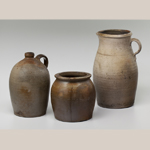
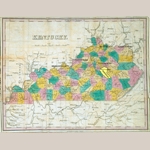
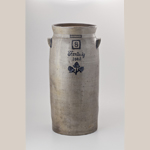
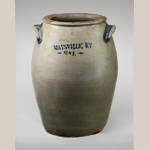
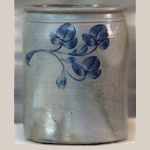
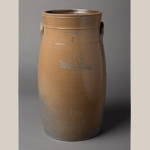
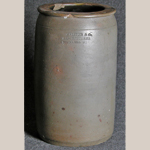
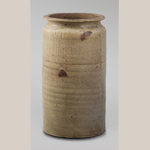
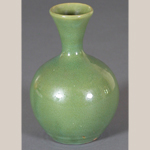
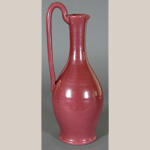
![Fig. 10: Jug stamped “J.P. GRINSTEAD” (John Parker Grinstead [w.1837–c.1860]), Waco, KY, c. 1837–1860. Stoneware; HOA: 11”. MESDA Acc. 5630.1.](https://www.mesdajournal.org/wp-content/blogs.dir/23/files/noe-2012/noe-fig-10-thumb.jpg)
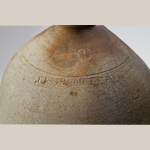
![Fig. 12: Jug stamped “GRIGGS & GRINSTEAD, / WACO, K.Y.” (Lucien T. Griggs [w.1857–c.1875] and John Parker Grinstead [w.1837–c.1860] and ), Waco, KY, 1857–1875. Stoneware; HOA: 20-1/8”, HOA: 16”, DIA: 12”. Collection of the Speed Museum of Art, Acc. 2012.7.23.](https://www.mesdajournal.org/wp-content/blogs.dir/23/files/noe-2012/noe-fig-12-thumb.jpg)
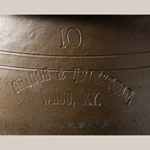
![Fig. 14: Jug stamped “G. W. GRINSTEAD & BRO, WACO, KY.” (George Webb Grinstead [1856–1932] and Smith Grinstead [1834–1918] or Joseph Parker Grinstead [1862–1903]), Waco, KY, 1857–1875. Stoneware; HOA: 13-3/8”, HOA: 8”, DIA: 7-1/4”. Collection of the Speed Museum of Art, Acc. 2012.7.33.](https://www.mesdajournal.org/wp-content/blogs.dir/23/files/noe-2012/noe-fig-14-thumb.jpg)
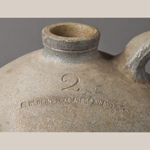
![Fig. 16: Jar stamped “P.A. HUFFMAN” (Philip A. Huffman [1821–1898]), Waco, KY, c. 1847–1857. Stoneware; HOA: 7-5/8”, DIA: 6-7/16” (of mouth). MESDA Acc. 5630.2.](https://www.mesdajournal.org/wp-content/blogs.dir/23/files/noe-2012/thumbs/thumbs_noe-fig-16-thumb.jpg)
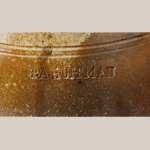
![Fig. 18: Crock stamped “P. A. HUFFMAN / OGGS MILL / K.Y.” (Philip A. Huffman [1821–1898]), Waco, KY, 1847–1850. Stoneware; HOA: 10-3/8”, HOA: 11-5/8”. Collection of the Speed Museum of Art, Acc. 2012.7.32.](https://www.mesdajournal.org/wp-content/blogs.dir/23/files/noe-2012/noe-fig-18-thumb.jpg)
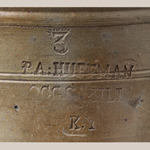
![Fig. 20: Pitcher stamped “V.BAUMSTARK” (Valentine Baumstark [1825–1885]), Waco, KY, 1857–1885. Stoneware; HOA: 13-13/16”, WOA 8-3/8”. MESDA Acc. 5630.5.](https://www.mesdajournal.org/wp-content/blogs.dir/23/files/noe-2012/noe-fig-20-thumb.jpg)
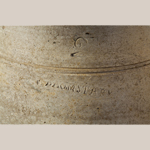
![Fig. 22: Jar stamped “ZITTEL & CO. / WACO KY” (Dennis Zittel [1835–1906]), Waco, KY, 1875–1885. Stoneware; HOA: 15-3/8”, HOA: 10”. Collection of the Speed Museum of Art, Acc. 2012.7.34.](https://www.mesdajournal.org/wp-content/blogs.dir/23/files/noe-2012/noe-fig-22-thumb.jpg)
